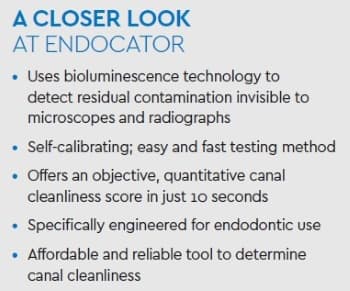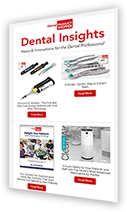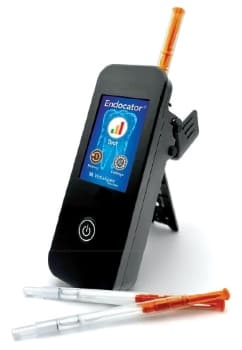Endocator detects and measures residual contamination in root canal systems, paving the way for successful endo treatments
Dr. Gilbert graduated from the University of Maryland Dental School, earning his dental degree in 2001 and endodontic certification in 2003. He is a professor in the Department of Endodontics at the University of Illinois at Chicago and a diplomate of the American Board of Endodontics. He is the founder of the Access Endo Impact Academy, a global direct mentorship continuing education platform, and a fellow in the International College of Dentists. Dr. Gilbert lectures nationally and internationally on clinical endodontics and personal wellness. A key opinion leader in the area of endodontics and new technology, he is a partner at Specialized Dental Partners and has a private practice limited to endodontics, in Niles, IL.

A ‘Brilliant Tool’
Endocator is a brilliant tool. The fact that it was invented by Randolph Cross, DDS, during his endodontic residency shows what fresh minds can offer. I would encourage young clinicians to realize they don’t have to be overly experienced to create something valuable for our profession.
When cleaning canals, we can use the very best techniques and go through every one of our protocols, but it doesn’t necessarily mean we’ve done enough. Endocator increases my confidence because it offers a quantifiable data point that I can rely on. It’s an incredibly simple and easy-to-use instrument and a great practice builder because it demonstrates your ability to invest in your practice to provide the best treatment for your patients.
Finally, as evidence-based data continues to show its correlation with greater treatment success, I believe Endocator will likely become an indispensable tool for clinicians everywhere.






.jpg&w=384&q=80)